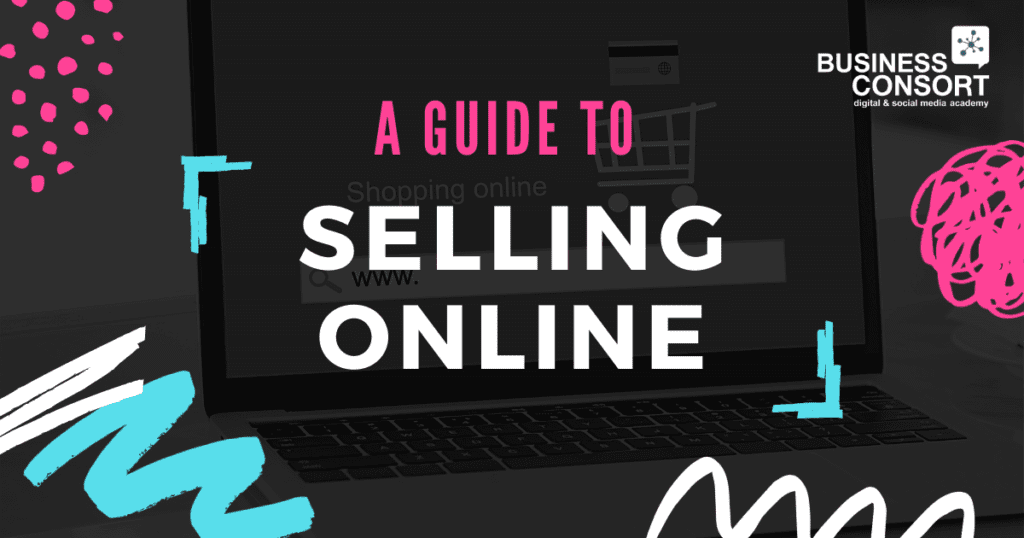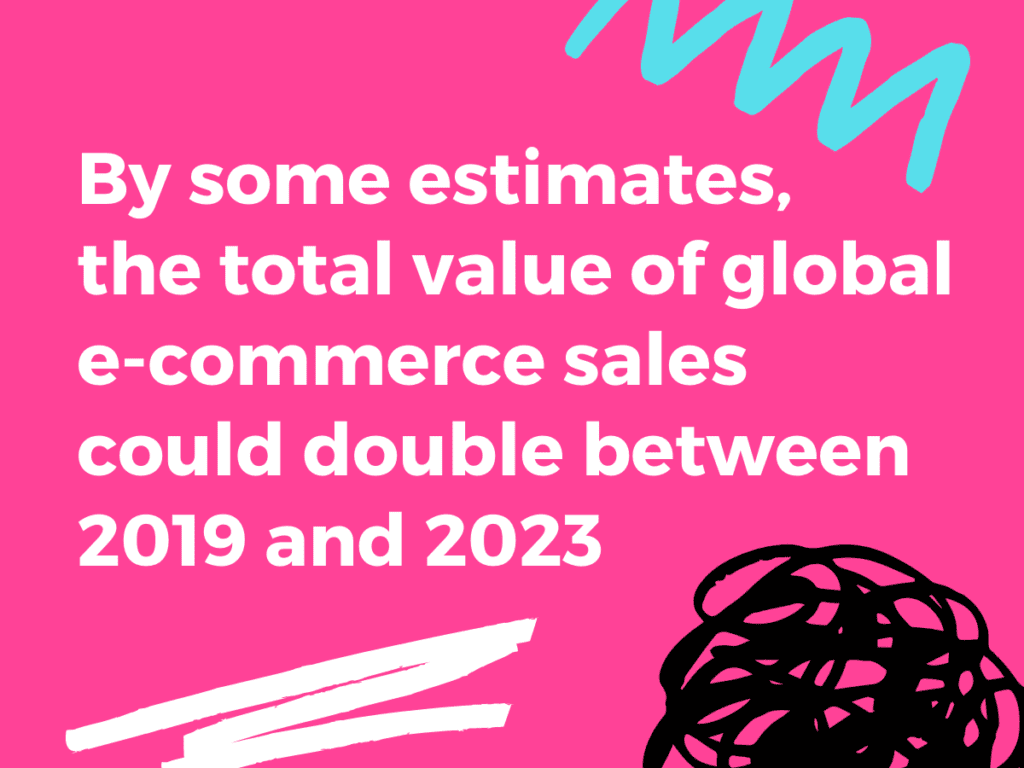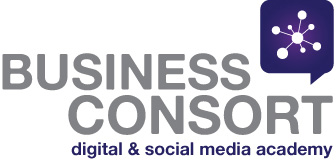What is e-Commerce Sales

Anyone who can still remember the early days of the internet when Amazon was a humble online bookstore knows just how far the e-commerce world has come in the last couple of decades. Not only have better internet speeds and mobile internet technology meant that more people can get online to access e-commerce services than ever before, but the range and depth of products and services that are deliverable remotely have also increased exponentially. Every sales and marketing professional today needs to be proficient in e-commerce.
What Is E-commerce Sales?
Ecommerce sales account for everything that is sold online. Whenever you spend money online, whether you are buying a physical product, a digital product, or a service, you are engaged in an e-commerce sale. As a result, the best approach to take when approaching e-commerce marketing will depend on exactly what is being sold. There are a whole host of e-commerce services that are sold business to business and are therefore rarely encountered by the average consumer.
The e-commerce sector was already predicted to undergo an impressive increase in growth over the next decade, but the Covid-19 pandemic has accelerated things. While the pandemic has caused enormous economic damage, it has also given the e-commerce sector newfound importance as people across the world look to buy what they need remotely.
Some economists have noted that trends that were already underway towards the end of 2019 accelerated, in some cases by decades, over a period of just a few months. For those involved in sales and marketing for e-commerce businesses, there was an unprecedented shift in the market.
By some estimates, the total value of global e-commerce sales (in $USD) could double between 2019 and 2023. More conservative estimates predict an increase from $4.2 in 2020 to $6.53 billion, an increase of 55.4%.
What Is The Sales Funnel In Digital Marketing?
In digital marketing, the sales funnel refers to the set of tactics that a website uses in order to Funnel the user through the process of going from a visitor to the web site until they ultimately become a loyal customer. The digital marketing funnel is akin to a regular funnel. You pour in a steady stream of user traffic, and the funnel will ensure that it all ultimately ends up in the same place.
Most websites will have multiple funnels running in parallel. For example, there will be one marketing funnel that is designed to funnel users into becoming paying customers, but there will also be a marketing funnel for funnelling visitors into signing up for an email subscriber list. The purpose of these funnels is to maximise the number of visitors to a website that are then going on to take specific desired actions.
There are three components to a digital marketing sales funnel.
1.) The first is the foundation, which is where you define your objective.
2.) Then, you have the floodgates. These will control which funnel the new visitors to your website will be sent to.
3.) Then you have the funnel itself, which moves traffic from the beginning of the funnel to the bottom, which is taking the desired action.
Like any other marketing technique, sales funnels are not perfect. You won’t be able to funnel 100% of your traffic, and some people will abandon the funnel halfway down. However, you can maximize the effectiveness of your funnels by providing intuitive navigation that enables your users to find what they need.
In some cases, you can get your users to the end of the funnel with a single click. For example, many websites have a link to sign up to their mailing list in the footer of every webpage. If your homepage is sleek and free of clutter, there’s a good chance that you can capture at least some of the traffic from your homepage and send them straight through the funnel.

What Is Sales Enablement?
Sales enablement is the process put in place to ensure that the sales team has everything they need to do their jobs. To take advantage of e-commerce opportunities, businesses need to have solid strategies in place to ensure that all the content, tools, and knowledge of the products and services on offer is available to the sales team whenever they need them.
Obviously, having more experienced salespeople is always helpful. But the purpose of sales enablement is to ensure that every salesperson is able to do the job to the best of their abilities and that those who are just starting are able to get up to speed and start learning the ropes as quickly as possible.
For modern sales departments, e-commerce is often a core part of their daily work. In order for products and services to be listed on the website of online retailers, someone has to provide them with accurate information about the specific features of those products and services. This responsibility falls on the shoulders of the sales team.

What Is A Sales Manager?
Sales managers serve as the directors of the sales team, leading teams of salespeople and ensuring that they are all following the same strategies and procedures. Having a sales team working in harmony with a consistent approach across the board is more effective than having everyone running around like headless chickens doing their own thing.
In order to be effective, sales managers need to be just as capable of looking into the past and reviewing previous marketing campaigns to see what lessons can be learned and how things can be improved for next time. This means that they need a solid grasp of data analytics, as well as training and experience when it comes to formulating a cohesive sales strategy.
Within the realm of e-commerce, sales managers need to have a good understanding of the landscape, especially what platforms are available to sell through. Some businesses will choose to sell their wares through their own website, but most will also sell products through other channels such as Amazon. It is the responsibility of the sales managers to identify the best channels for their business and to formulate a strategy for using it to its full advantage
What Is A Sales Funnel?
A sales funnel is the sequence of steps that users have to take once they reach a website in order to become a paying customer. For a customer in a brick and mortar store, the layout of the shop might form part of the sales funnel. In this case, visitors to the store have to physically pass by certain items in order to get to the stuff they want. By putting some examples of the most popular items in their front window display, so customers know they stock it, but keeping the actual stock at the back of the store, they can force customers to pass by as much of the merchandise as possible before getting to what they want.
For an e-commerce store, things work a little differently, but the core principles are the same. The design of an e-commerce store’s homepage is a hugely significant part of their sales funnel. E-commerce stores need to be as easy as possible for both new visitors and loyal customers to navigate their way around and find what they want. The easier you make it for a user to get from the homepage to what they want from you, the easier it is to construct funnels that take them there.
No funnel is 100% perfect and you won’t be able to capture every single visitor to your website.
However, it’s important to remember that you don’t have to capture them on their first visit, you might have more chances in the future. You can also ensure that every visitor, or as close to every visitor as possible, that comes to your website will be bought to the top of the sales funnel. Whether they go down it to the bottom is another question entirely.
What Is Sales And Marketing?
Sales and marketing are both intimately connected, but they are also separate entities. Both sales and marketing teams have similar responsibilities and obligations, but the precise details of their work are a little different. The sales team are involved in promoting goods and services, whereas the marketing team are in charge of promoting, selling, and distributing products and services.
There are some other subtle differences in the way that sales and marketing departments are run. Sales workers tend to target quite specific subgroups of users, whereas the marketing team are instead concerned with selling to the general public.
E-commerce has completely transformed the global economy.
Advancements in technology in the last couple of decades means that it is now possible to sell a wide range of products and services via e-commerce than would have been possible before. Most businesses today that are able to offer an e-commerce component have decided to do so. Getting set up to sell products and services online is simple for most businesses, and for others, it can even be a more cost-effective way of doing business.
Think about the Amazon business model, whether you love it or hate it there is no denying that it works and very well at that!
The key to ecommerce is ensuring that you build a funnel that attracts your ideal client. This is very much down to how well you actually understand your customer and their needs, wants and behaviours so make sure you have a clear picture of the person, not the industry you sell to.
SUBSCRIBE to our Digital Marketing Made Easy Podcast to keep up to date on latest digital marketing tips, techniques and tools.

